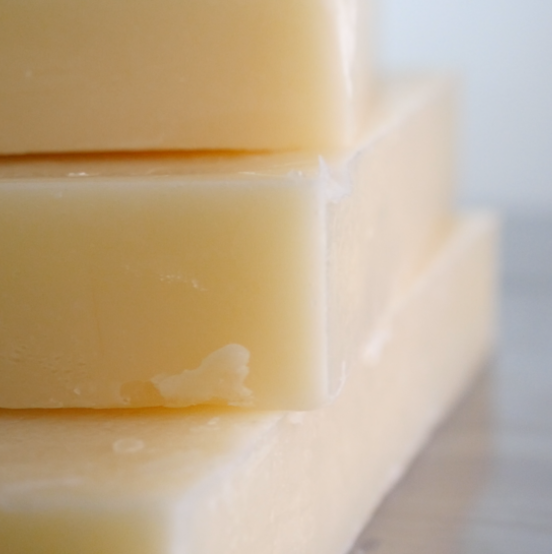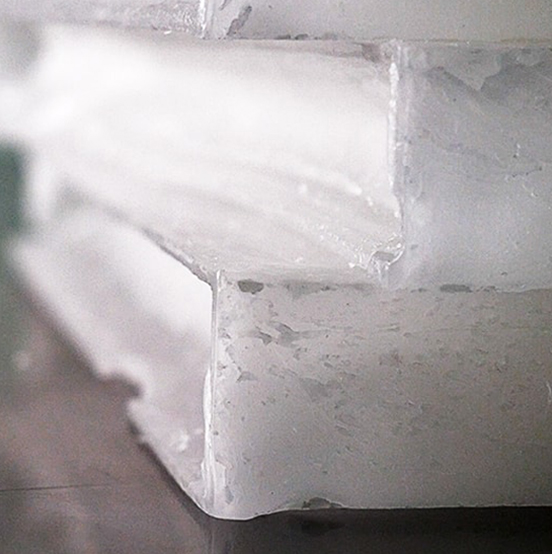Our Wax Products
Industrial wax has long served as a primary ingredient in products across many industries. Wax possesses many valuable benefits, properties and capabilities that make this versatile substance incredibly useful.
At Blended Waxes, we provide our customers with custom wax blends designed to serve all of their unique manufacturing needs. With over 45 years of experience creating high-quality solutions and delivering exceptional customer service, we’re the suppliers you can trust.
Waxes are substances derived from plant, animal, mineral or synthetic materials. When you come to us for your wax application needs, you’ll find a comprehensive selection of over a dozen waxes you can choose from based on your unique requirements.
Look through our bulk wax selection for the best wax for your needs and contact us to learn more.
Applications by Industry
Sources of Wax
Wax is used in many different ways by many different industries, but where does it come from? Wax comes from many different sources and each type of wax is optimal for a different use. Read below to find out where wax is sourced from along with what different types are best used for
Animal Waxes
Animal waxes are natural secretions of animals and insects. There are many different types of animal waxes.
1. Beeswax
Beeswax is the most common type of animal wax. Worker bees produce it in a hive, and honeybees use it to build honeycomb cells. The wax is harvested by melting an empty honeycomb in boiling water. Beeswax is used in many products, including candles and cosmetics.
2. Tallow
Tallow is rendered from animal fat (typically beef). It has been used in candles for centuries because it is an inexpensive wax. Candles made from tallow are slow-burning, so they are good for emergency kits. Tallow is also used as a lubricant and a leather conditioner. This wax type is also being experimented with for aviation biofuels.
3. Lanolin
Lanolin (also called wool wax or wool grease) comes from wool-bearing animals like sheep. One of its most common uses is in personal care products like creams, lotions, lip balms and lipsticks. It is also useful for rust-proof coatings. Many baseball players use this wax to soften their gloves.
4. Ambergris
Ambergris is produced in the intestines of sperm whales. The whales make this waxy substance to protect their intestines when they eat something sharp. After the ambergris has built up inside of the whale, they get rid of it. The ambergris washes up on the shore where it is harvested. This expensive wax is used in some high-end perfumes to help the scent last longer. In the past, it has also been used to enhance the flavors of food and wine.
Plant Waxes
Two common types of plant waxes are Soy Wax and Carnauba wax. Carnauba wax comes from the leaves of a carnauba palm and is sometimes referred to as palm wax. Carnauba wax has a glossy finish and is a popular wax to use in car polish, shoe polish and even floor and furniture polish.
Soy wax is made from the oil of soybeans. The most popular use for soy wax is in making candles, but is used in cosmetics as well. Soy Wax is a great choice for those wanting an environmentally friendly product since it is a renewable and sustainable resource.
Both animal and plant waxes are considered by many as Natural Waxes.
1. Petroleum Waxes
Two types of petroleum waxes are Paraffin and Microcrystalline wax. While both Paraffin and Microcrystalline waxes are derived from crude oil, each product is quite different. Paraffin wax is typically white and odorless. It is used in a wide variety of products and is one of the most commonly used types of wax. Paraffin wax is used in candle making, paper coatings and crayons.
Microcrystalline waxes are typically darker, heavier and tackier than paraffin waxes. It is de-oiled during the refining process, meaning the oil is removed leaving wax behind. This type of wax is used in the tire and rubber industry. Additionally, microcrystalline waxes are also used in candle making, cosmetics and can also be used as a blending ingredient to increase flexibility, viscosity, and hardness in other products.
2. Mineral Waxes
A less commonly known type of wax is mineral waxes. One type of mineral wax is Montan wax. Montan wax is extracted from lignite and brown coal. It is only available in a few places throughout the world (two locations are Germany and California). Montan wax is used in the paper coating industry as well as in car and shoe polishes due to its ability to provide scuff resistance, water repellency and a high gloss finish.
3. Synthetic Waxes
When thinking of Synthetic waxes, one type of wax, in particular, comes to mind: Fischer-Tropsch.
Fischer-Tropsch wax is produced by the polymerization of carbon monoxide under high pressure. Fischer-Tropsch waxes are one of the most commonly produced synthetic waxes. It was developed by none other than Franz Fischer and Hans Tropsch in 1925. It is used in printing ink, candles, coatings and polishes among other things.
There you have it, the top 5 sources of wax. Check out our Glossary of Wax Terms for more information.
Uses of Industrial Waxes
Our industrial wax blends can serve the needs of businesses in a wide range of industries, such as:
- Automotive: We can provide high-precision wax blends for investment casting, which entails coating a wax pattern with a refractory ceramic material. This process produces engine components, seat belt latches and various aftermarket parts.
- Medical: Waxes play a prominent role in the health care industry for tissue embedding and a wide range of medical device applications.
- Cosmetics and personal care: Our waxes have numerous therapeutic uses, making them well-suited for many personal care products, such as creams and lotions. They can also serve as additives for cosmetics.
- Marine: Industrial waxes are useful for marine casting applications when manufacturing propellers and engine parts. Boat manufacturers also use wax blends to protect exposed watercraft surfaces from water damage.
- Aerospace: Many aircraft components require waxes to form carbon fiber shapes for various parts. Examples include engine components, fuselages, wings and structural elements.
- Food and beverage: The food and beverage industry needs waxes to coat or prepare certain food products. An example is cheese wax, a food-grade product formulated to keep moisture in cheeses and prevent mold. Another product is duck wax, which is available for defeathering waterfowl.
- Construction: The construction industry relies on straight paraffin wax and wax blends to reduce dust and preserve wood in outdoor settings. It’s possible to develop custom blends for specific building applications.
- Commercial: Our wide assortment of commercial sealing waxes is ideal for various functional and aesthetic applications. Examples include creating tamper-resistant seals on bottles, producing protective coatings and improving a product’s appearance to make it more attractive to buyers.
- Paper, packaging and corrugated: This industry has wide-ranging needs for wax blends. Examples include creating wrappings for sandwiches and other food items and adding scuff- and water-resistant properties to packaging.
- Adhesive: Our hot-melt adhesives and supply wax additives work well when developing various custom formulations.
Future Industrial Wax Use
The global industrial wax industry is experiencing an upward growth trend due to several factors. One change is that raw material sourcing has seen some improvements, making the process increasingly diverse, cost-efficient and sustainable. Wax’s natural properties, including its excellent resistance to ultraviolet rays and water, have also contributed to its more widespread use.
Several industries will likely experience significant changes in the demand and usage of industrial waxes in the future. One example is the oil and gas industry, where pricing volatility is causing companies to turn to beeswax and polyethylene wax instead of synthetic and mineral waxes for more reliable cost stability.
Benefits of Industrial Wax
Industrial wax for product application purposes comes with many significant advantages:
- Glossy: Many waxes deliver a smooth, shiny finish, making them ideal for high-gloss polishes.
- Lubricating: Some industrial waxes have greasing properties, enabling them to act as lubricants.
- Waterproof: You can protect products against water damage with wax’s waterproofing capabilities.:
- Flexible: We carry flexible wax blends that provide excellent pliability and tensile strength.
- Moisturizing: Industrial wax can help food and personal care products retain moisture in the long term.
- Corrosion-resistant: You can find wax varieties that protect products from corrosion and other damage.
Why Choose Blended Waxes for Wax Products?
Blended Waxes began producing wax products in 1976, and we’re still committed to creating custom blends that set the standard for quality and consistency today. We perform every step of the manufacturing process on-site in our high-tech laboratory, from research and development to testing and production.
Our processes are ISO 9001:2015-certified, with quality controls that comply with American Society for Testing and Materials (ASTM) standards.
Buy Wax in Bulk From Blended Waxes Today
Blended Waxes is a bulk wax manufacturer that creates quality blends at competitive prices for your business. Contact us for your bulk wax needs — and if you have any questions or want to know more, please get in touch with us.
Buy Wax in Bulk From Blended Waxes Today
Blended Waxes is a bulk wax manufacturer that creates quality blends at competitive prices for your business. Contact us for your bulk wax needs — and if you have any questions or want to know more, please get in touch with us.









